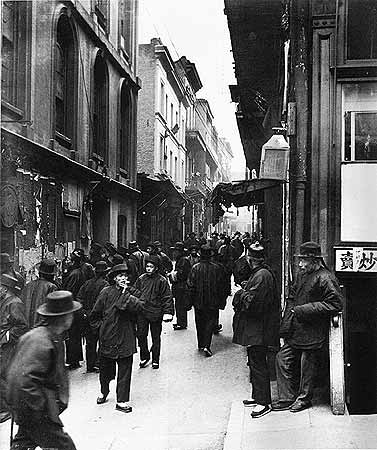talking history | syllabi | students | teachers | puzzle | about us
“The street of the gamblers (by day).”
By 1890, 200,000 Chinese immigrants, mostly men, lived in the United States, usually working under harsh and dangerous conditions. Chinese immigrants faced hostility that sometimes spilled over into violence. In 1882 Congress, responding to the demands of white workers, passed the Chinese Exclusion Act, which severely restricted immigration by Chinese into the U.S. San Francisco’s Chinese community was the largest in the nation in 1890, with 25,833 people. Arnold Genthe’s turn-of-the-century photographs of San Francisco’s Chinatown provide information about the Chinese community, but his characterizations often convey a distorted and ominous message. Despite its title, this photograph of Ross Alley, taken some time around the Chinese New Year holiday, is significant for depicting the unusual daytime congestion resulting from the seasonal unemployment of many Chinatown workers after the holiday.

Source: Prints and Photographs Division, Library of Congress.
